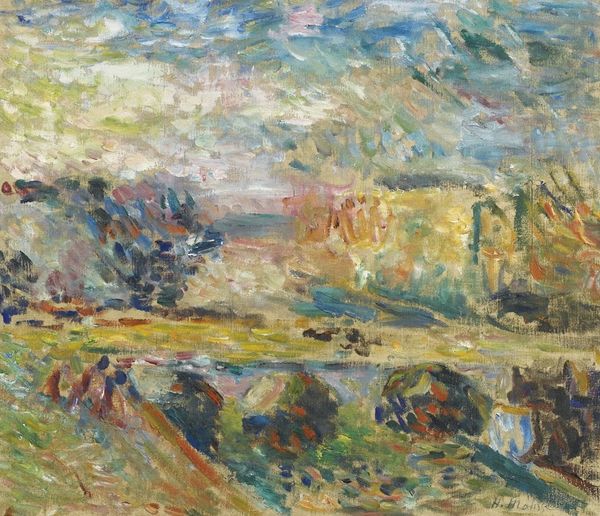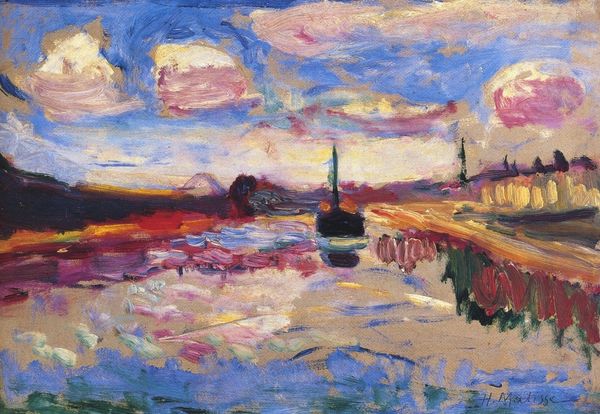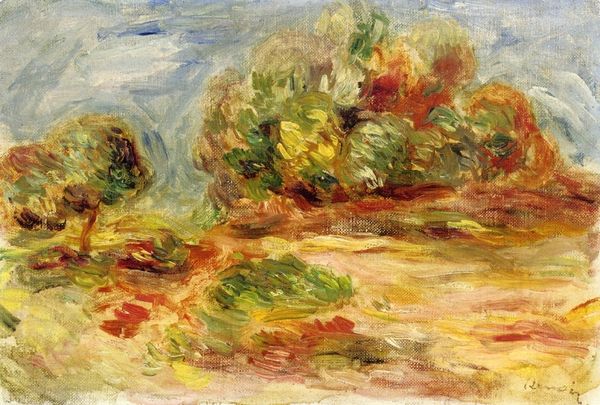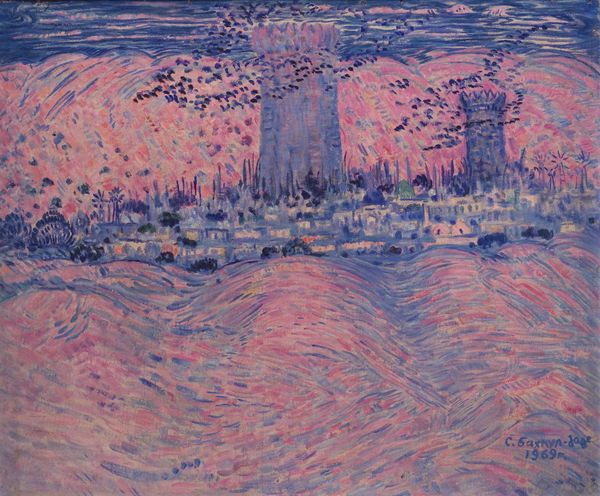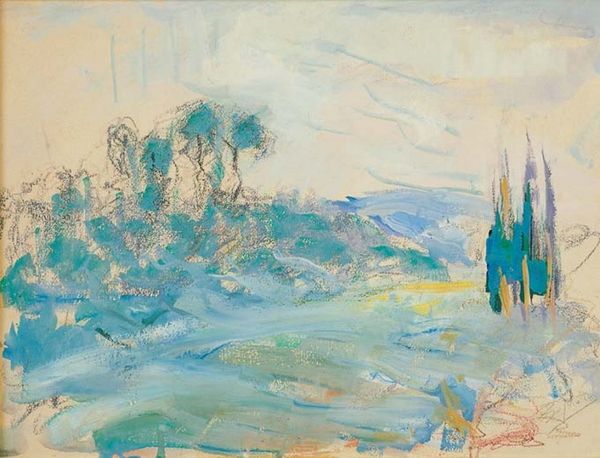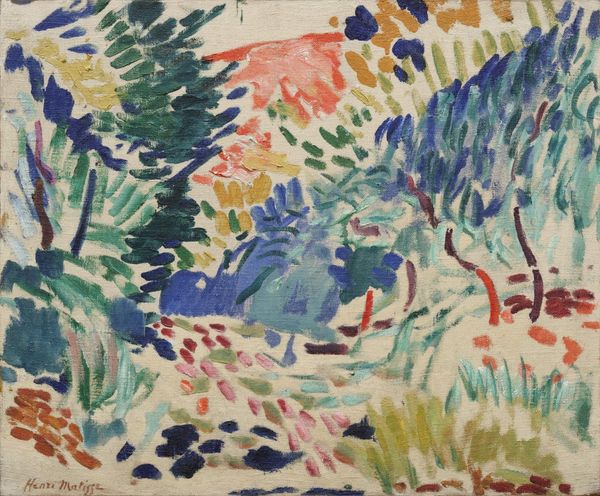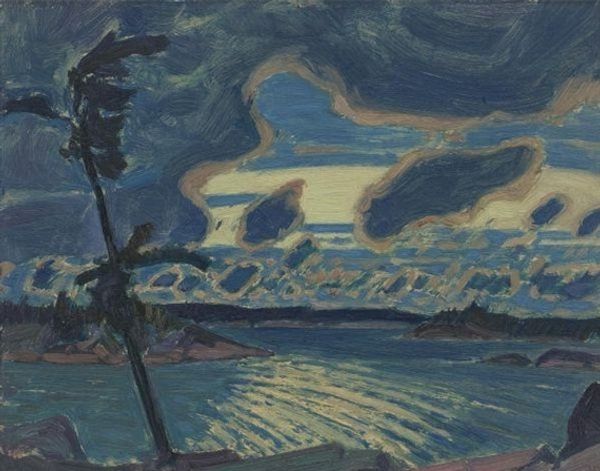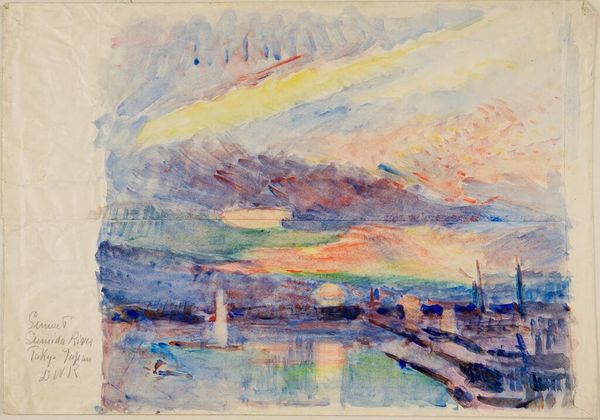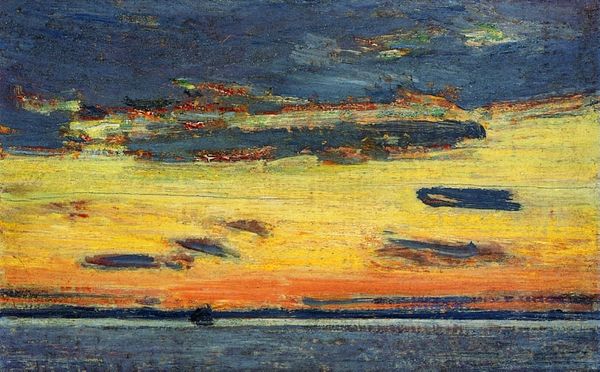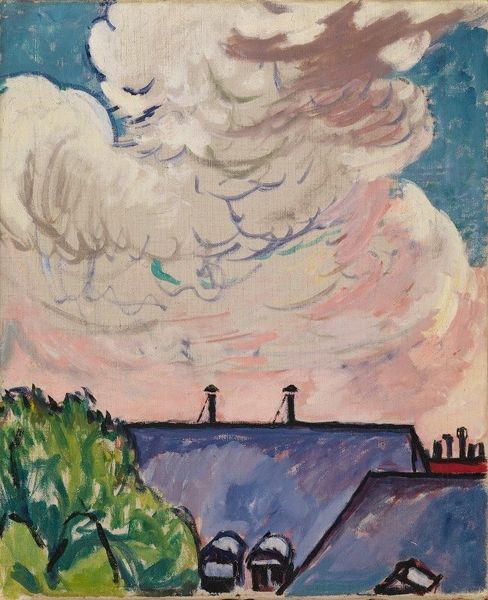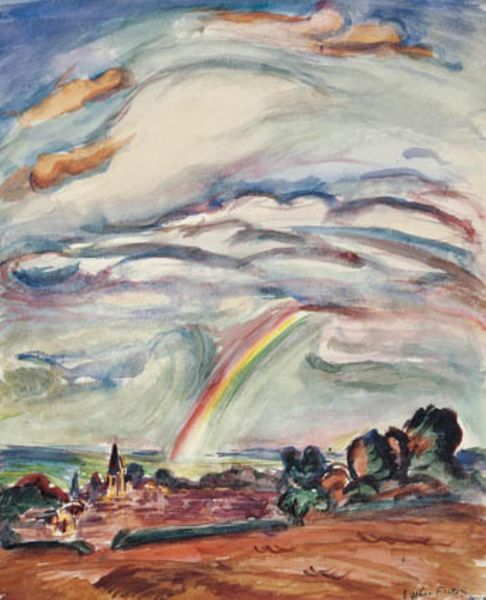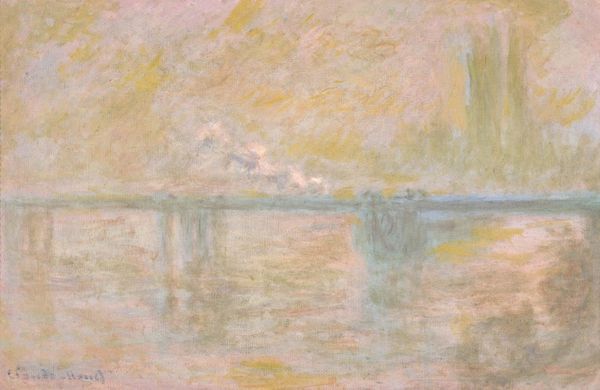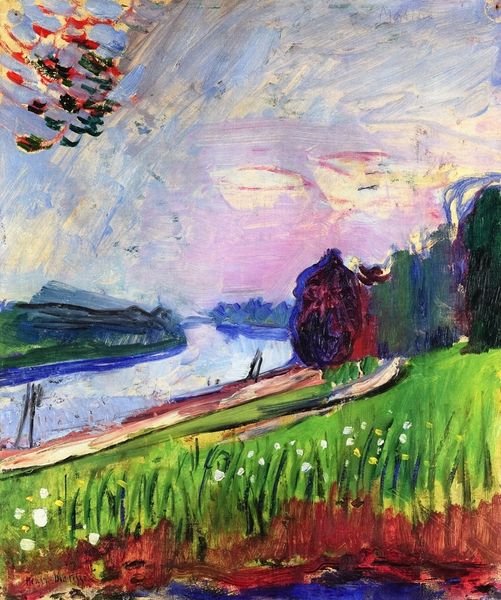
Dimensions: 54 x 81 cm
Copyright: Public domain
Editor: So, this is Monet's *Sunset at Lavacourt*, painted in 1880. It's oil on canvas, and I’m immediately struck by how muted the colors are, almost melancholic, despite it being a sunset. What do you see in this piece? Curator: I see a memoryscape. Monet isn’t just painting a sunset; he’s invoking the feeling of sunsets past, sunsets remembered. The blurring of the sky into the water, the village fading into silhouette - they are symbols of transience and reflection. Editor: Transience, that's interesting. Do you mean how impressionism captures a fleeting moment? Curator: Yes, but also something deeper. Consider the orange orb of the sun, its reflection fractured on the water's surface. The sun, often a symbol of life and vitality, appears diminished, almost bleeding into the surrounding blues and greys. It echoes a collective feeling. Remember, the late 1870s in France were marked by economic downturn and a sense of uncertainty. Do you see how that muted palette reflects this somber mood? Editor: I see that now, it's like the painting is not just documenting a place, but also a feeling... a shared feeling. Curator: Exactly. And think about the way the village is rendered – not as distinct buildings, but as a hazy form. A kind of generalized silhouette which embodies a common sense of identity which he seems to simultaneously dissolve by these quick and sure strokes. It is almost a remembrance. Editor: So, Monet uses familiar imagery - a sunset, a village - but infuses them with cultural and emotional meaning through his style and color choices? Curator: Precisely. He makes what is universally appreciable his and deeply expressive through cultural symbolism and his innovative method. This transforms the canvas into more than a beautiful landscape; it becomes a poignant meditation on time, memory, and the collective psyche. Editor: That’s a very powerful perspective; I will definitely be looking at Monet with a new awareness. Curator: As will I, now that you have shared your impressions. It is amazing that even when painting personal impressions, art can also speak for cultural identity.
Comments
No comments
Be the first to comment and join the conversation on the ultimate creative platform.
